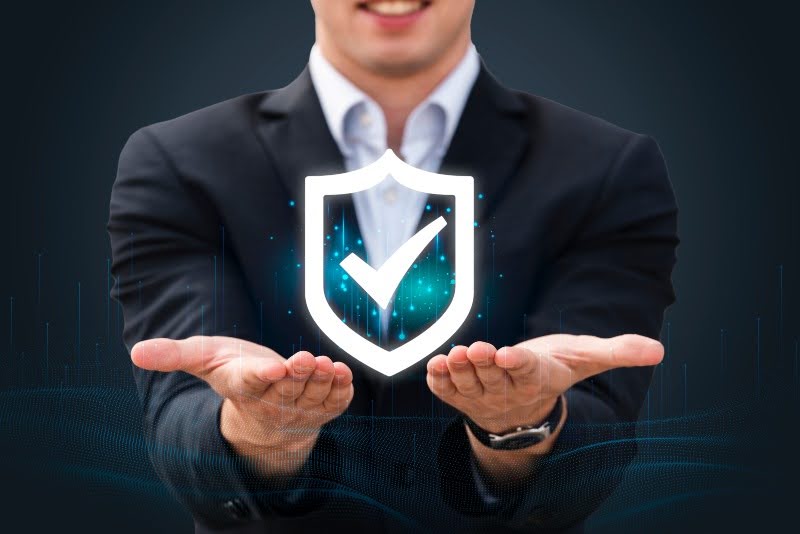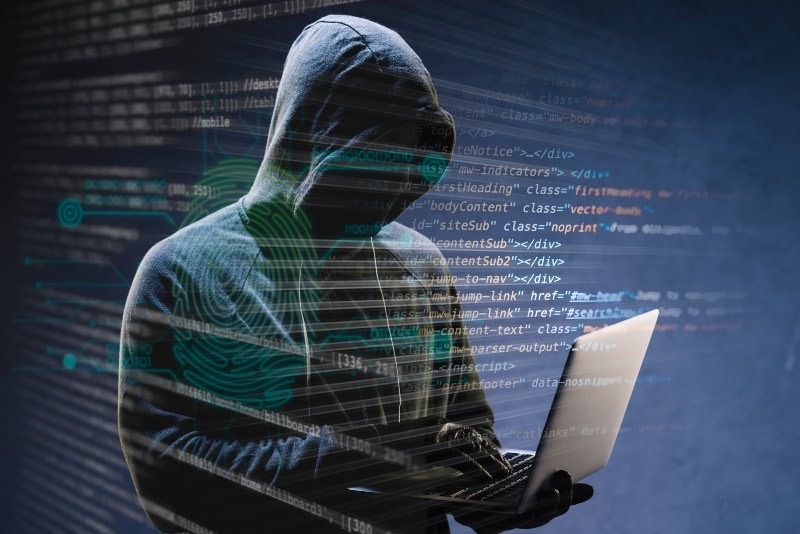Brand Protection: Strategies to Prevent Fraudulent Use
Brand protection is an essential component of cybersecurity that requires a proactive and multifaceted approach to protecting a brand’s identity and reputation in the digital environment.
Below, we explain what it consists of and how it is relevant in today’s digital environment.
What is brand protection?
A brand is a distinctive sign that identifies a company’s products or services in the market. It can be a name, logo, symbol, design, or a combination of these elements. In addition, the brand houses an organization’s culture, values, reputation, and reliability.
Branding is essential to distinguish a company’s products from those of its competitors, but it is much more so to create a relationship of trust and loyalty with consumers, so it is a valuable asset that needs protection.
Brand protection is a crucial aspect of an organization’s cybersecurity strategy. It focuses on safeguarding the brand’s identity, integrity, and reputation in the digital environment. In the digitalization age, brands face increasingly sophisticated cyber threats that aim to damage their image and trustworthiness.
Brand protection threats can take many forms, including phishing, spoofing, product counterfeiting, and creating fraudulent domains. These threats can seriously damage an organization’s reputation and lead to the loss of trust of its customers and consumers in general. The most severe cases can lead to financial losses and legal conflicts.
Brand protection in the field of corporate cybersecurity involves a variety of strategies and tools. These include continuously monitoring the brand’s online presence, searching for potential trademark violations, implementing robust security measures, and educating employees and customers on security best practices.
In addition, brands can work with cybersecurity professionals and use advanced technologies to proactively detect and respond to threats. This includes using artificial intelligence and machine learning to identify identity thefts and respond quickly to threats.

Importance of brand protection in the digital environment
Brand protection has become fundamental for companies looking to maintain their reputation, credibility, and value in a highly competitive and ever-evolving environment.
A company’s brand is one of its most valuable assets and its protection in the digital environment is crucial for several reasons:
1. Preservation of corporate identity
A company’s brand is its identity in the marketplace. Protecting it in the digital environment ensures the company maintains a consistent and recognizable image across all online channels, strengthening consumer trust and fostering brand loyalty.
2. Preventing Spoofing
In the digital environment, companies are exposed to the risk of identity theft, in which malicious third parties use a brand to commit fraud, deceive customers and collaborators, or damage their reputations.
Brand protection helps prevent these attacks and maintains the integrity of the company.
3. Defence against unfair competition
In a saturated digital environment, companies compete not only for customers but also for visibility and reputation. Protecting the brand helps prevent unfair competition from taking advantage of the company’s reputation and prestige to gain unfair advantages.
4. Guarantee of quality and authenticity
Brand protection in the digital environment ensures that the company’s products and services are authentic and of high quality, avoiding consumer confusion and protecting the reputation built over time.
5. Legal compliance and protection of intellectual and industrial property
A company’s brand is an intangible asset protected by law. Ensuring their protection in the digital environment helps them comply with legal regulations related to intellectual or industrial property and avoid possible litigation for brand infringement.
Consequences of Lack of Brand Protection
The lack of brand protection in the digital environment can have several negative consequences for a company’s reputation:
- Fraudulent use of the brand: The unprotected brand is exposed to unauthorized use by third parties, competitors, or malicious actors who take advantage of the company’s reputation to market products or services that are not authentic.
- Loss of credibility: When a brand is impersonated, its customers perceive that the company is not committed to protecting its brand and the quality of its products or services and, therefore, their safety and rights as consumers.
- Loss of revenue: Properly protecting the brand avoids the risk of decreased demand for the company’s products or services due to a loss of credibility or trust in the brand.
- Loss of capital and resources: To reverse the consequences of fraudulent brand use, the organization must invest in advertising and marketing campaigns to regain consumer trust and restore brand reputation.
- Loss of control over online presence: Brand impersonation causes loss of control over the company’s online presence, which can negatively affect its perception and credibility in the market
- Loss of value: Reputation and brand value are intangible assets critical to a company’s success, affecting its overall valuation.
Common Threats to the Brand
As we’ve noted above, threats to brand protection can take many forms.
Social Media Fraud and Scams
Brand impersonation is frequently used to deceive customers and consumers on social media through fake campaigns to cause them harm, usually financially.
This type of fraudulent brand use usually ends with complaints by those affected to the company, which is forced, on the one hand, to to prove the impersonation and, on the other hand, to carry out campaigns to warn consumers of fraud and recover the brand’s prestige.
Cyberattacks on business infrastructure
A large number of successful cyberattacks begin with corporate impersonation. This impersonation is how the cybercriminal manages to deceive an employee or collaborator with access to the business infrastructure.
Once, thanks to this fraudulent use of the brand, the cybercriminal is inside the system, and the cyberattack is consummated.
Phishing and impersonation
Phishing is a social engineering technique that uses spoofed emails and websites that mimic legitimate brands to deceive consumers, employees, partners, and suppliers and obtain sensitive information.
It is one of the most commonly used techniques by cybercriminals today due to its high level of success. With new technologies, such as Artificial Intelligence, being used to plan cyberattacks, phishing is becoming more sophisticated and difficult to detect. Brand protection has, therefore, become a key strategy of corporate cybersecurity.

Fraudulent use of logos
The fraudulent use of exact copies or almost indistinguishable versions of brand identity elements, such as isotypes or logos, in the digital environment causes reputational and economic damage.
These copies are used by cybercriminals to carry out scams or to build businesses cloned from the original outside the law and with inferior qualities, whose activity ends up harming the company.
Squatting
These types of cyberattacks have to do with the company’s domain, which is another element of the brand Squatting consists of registering domains that simulate a brand name for fraudulent purposes.
Among squatting, it is common to find registered domains that are very similar to the original but with some almost negligible changes. Typosquatting is a variant that takes advantage of common typos among users when typing a domain to create one that contains them.
On the other hand, we highlight system vulnerabilities in cybersecurity, which are as crucial as threats.
Strategies to Protect the Brand
An organization must implement several strategies that combine legal and cybersecurity elements to protect its brand.
Legal Strategies
Regarding legal strategies, we highlight:
- Brand registration: Obtaining the rights to a brand is one of the best forms of protection. Once registered, any infraction can be dealt with harshly legally.
- Legal action: When infringement persists, legal action must be taken to protect the trademark and stop fraudulent use. This can involve a protracted legal battle, primarily if the violator operates from another country.
Cybersecurity Strategies
As cybersecurity strategies, at Kartos by Enthec, we highlight the following:
- Continuous monitoring: It is essential to actively monitor the brand’s presence online on an ongoing basis to detect potential counterfeiting. Monitoring tools can help track e-commerce platforms, websites, online stores, social media, and search engines. This includes tracking brand mentions on social media, forums, blogs, and other online channels.
- Domain analysis: It is essential to review and monitor domains and subdomains related to the brand to identify potential squatting cases. Acquiring domains similar to the original can be a sign of fraudulent use of the brand.
- Takedows: If trademark infringement is detected, it is critical to react immediately. Sending a cease and desist order through a corporate attorney is the first step of the takedown action, which is imperative to stopping fraudulent activity.
- Use of advanced technologies: Advanced technologies, such as artificial intelligence and machine learning, are most valuable for proactively detecting and responding to fraudulent brand uses.
- Visual identity care: Maintaining a coherent and consistent visual identity, including the brand’s logo, helps cybersecurity tools identify potential fraudulent uses.
To stay up-to-date on cybersecurity, check out our post→ The 5 Cybersecurity Trends You Should Know.
The Role of Kartos by Enthec in Brand Protection
The continuous and automated monitoring of our Kartos XTI Watchbots platform focused on social media intelligence and DNS health allows organizations to detect, track, and deactivate phishing, fraud, and corporate identity theft scams. Customers or employees are targeted at a specific segment of the general public to steal credentials, obtain confidential information, or spread malware.
Kartos by Enthec performs brand protection through:
- Early detection of potential phishing, fraud, and scam campaigns from different channels: squatting, social media, and subdomains.
- AI analysis of the phishing, fraud, or scam campaign using the official profile generated and all its infrastructures, with reliable proof of these in different countries.
- Viewing the campaign and its infrastructures, transferring information on all the IPs, domains, and URLs necessary to cancel the campaign, and providing screenshots of the final URLs.
- Continuous monitoringto control and follow up on the entire campaign and all its infrastructures until it is closed.
If you need to know more about how Kartos can protect, discover our solutions or contact us.
